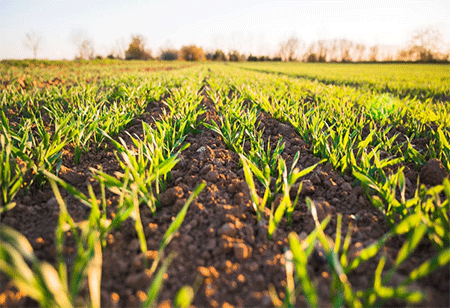
Exploring the Benefits of Regenerative Agriculture
Regenerative agriculture is an approach that focuses on improving and restoring the health of the soil, ecosystem, and biodiversity. It goes beyond sustainable farming by actively enhancing soil fertility, increasing water retention, and promoting carbon sequestration. Practices include cover cropping, crop rotation, minimal tillage, and integrating livestock. The goal is to create resilient and sustainable farming systems that benefit both the environment and agricultural productivity. In order to provide a resilient, sustainable, and ecologically sound basis for agriculture in the future, agricultural businesses must incorporate regenerative agriculture into their operations.
As startups implement regenerative techniques, they enhance the overall resilience of their farming systems. This not only mitigates environmental impact but also establishes a foundation for consistent and reliable crop yields. Furthermore, regenerative agriculture aligns with the global focus on combating climate change. Startups support carbon offset initiatives and establish themselves as contributors to larger sustainability objectives by storing carbon in the soil. This, in turn, attracts investors and partnerships, fostering a positive image for the startup within the industry.
Soil Health
Improving soil health is a key function of regenerative agriculture, which presents a viable path for agricultural businesses. With a focus on organic farming and biodiversity, this sustainable method gives soil repair top priority. Regenerative agriculture reduces soil erosion, increases water retention, and improves nutrient cycling by supporting cover crops, low tillage, and varied crop rotations. Long-term financial gains result from investing in regenerative techniques for agribusiness startups. Higher yields, less reliance on synthetic inputs, and improved resilience to pests and diseases are all results of improved soil health. This supports an agricultural system that is both robust and economical, which is in line with the financial objectives of startups.
Regenerative agriculture also satisfies consumer desire for nutritious, ecologically friendly produce. By using these techniques, agribusiness entrepreneurs may promote sustainable farming while also helping the earth. Startups that are dedicated to regenerative methods will have an advantage over their competitors as governments and consumers begin to recognize and reward such initiatives. To sum up, agri businesses that implement regenerative agriculture not only tackle environmental issues but also guarantee a strong and long-lasting basis for their farming endeavors, encouraging a balanced approach between environmental conservation and crop yield.
"In regenerative agriculture, we discover a holistic vision where farmers become stewards, and fields become ecosystems that thrive on diversity and interconnectedness." - Dr. Christine Jones, Soil Ecologist
Crop Diversification
It is essential for encouraging crop diversification since it supports environmentally friendly farming methods. In contrast to traditional practices, which frequently worsen soil health, regenerative agriculture aims to increase ecosystem resilience. To increase the nutrient content and soil structure, this method makes use of a number of strategies, including limited tillage, rotational grazing, and cover crops. The focus on biodiversity in regenerative agriculture is one of its main features. Farmers can disrupt the cycles of pests and diseases and add a range of nutrients to the soil by rotating cover crops. By reducing the need for artificial inputs and increasing soil fertility overall, this encourages the development of an agricultural system that is more ecologically balanced.
A varied crop portfolio can act as a hedge against changes in the market. If one crop's prices fall, those of another can make up for it, giving the farmer a steady income. Furthermore, the integration of livestock into crop production systems is encouraged by regenerative agriculture. For example, rotational grazing enables cattle to eat crop waste and cover crops, promoting nitrogen cycling and lowering the need for outside fertilizers. This mutually beneficial partnership cultivates a robust and dynamic agricultural ecology. Furthermore, low soil disturbance is prioritized by regenerative techniques, which support a more robust soil microbiome.
This microbial diversity helps crops retain more water and improves nutrient availability to plants, making them more adaptable to changing environmental conditions. Farmers that use regenerative farming practices consequently see higher crop yields and more resilience to harsh weather. In conclusion, because of its emphasis on biodiversity, integrated livestock systems, and enhancing soil health, regenerative agriculture acts as a catalyst for crop diversification. Farmers may create a more resilient and sustainable agricultural landscape by implementing these techniques, which will maximize long-term food security and minimize negative environmental effects.
Farm Profitability
In the booming field of agricultural entrepreneurs, regenerative agriculture combined with innovative technology is changing farm profitability. This sustainable method promotes a positive interaction between agriculture and the environment by concentrating on soil health, biodiversity, and water conservation. Innovations in technology are essential to improving regenerative practices. Using sensors and data analytics, precision agriculture maximizes yields while reducing waste and optimizing resource allocation. Multispectral drones allow for real-time monitoring and help farmers make well-informed crop management decisions. IoT-powered smart irrigation systems guarantee effective water use, cutting expenses and environmental effect.
Furthermore, novel approaches to crop rotation and cover crops are utilized to improve soil fertility and reduce reliance on artificial inputs. Agribusiness startups are experiencing lower operating costs and higher productivity as a result of adopting this technology. The regenerative strategy not only coincides with environmental sustainability but also translates to economic viability. Enhanced crop resilience results from enhanced soil health and decreased dependency on outside inputs, which eventually translates into higher earnings for farmers involved in these innovative agri companies.
We use cookies to ensure you get the best experience on our website. Read more...